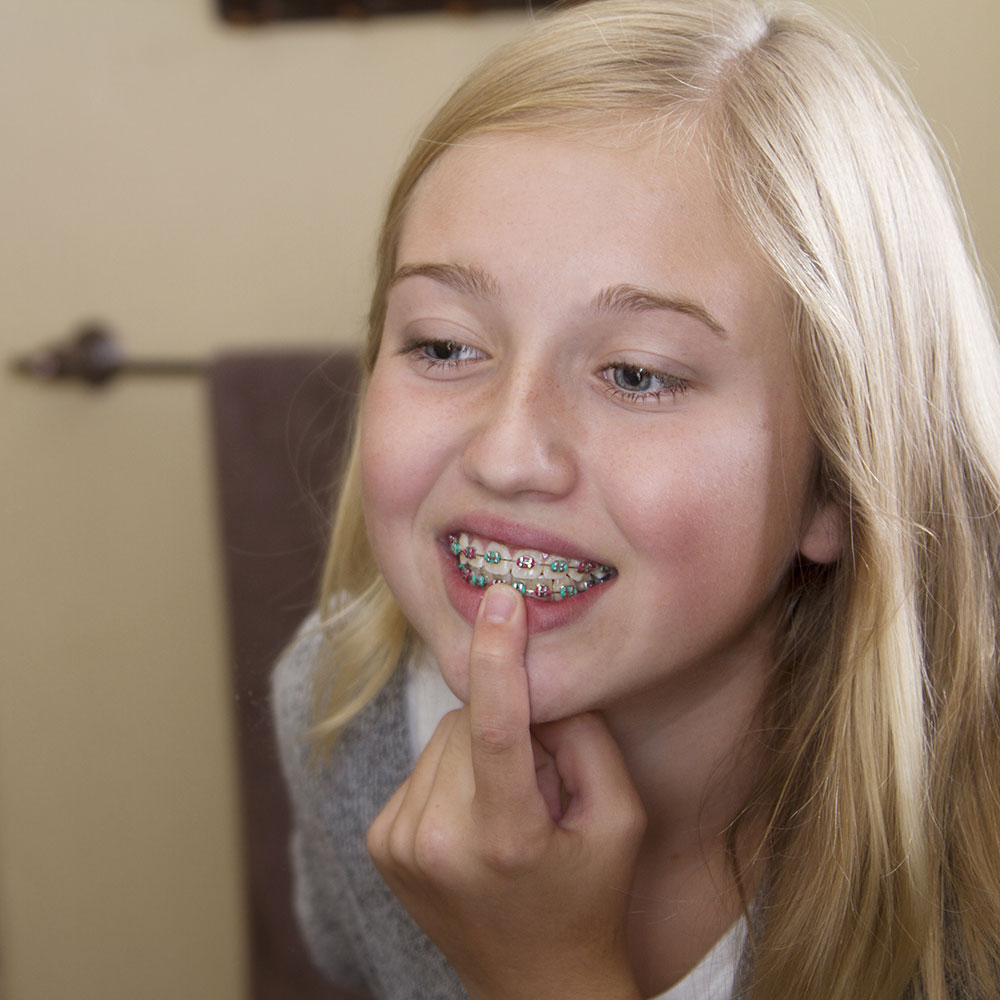Having a clean mouth is important. Brushing and flossing removes the thin sticky film of bacteria that grows on your teeth and braces. This sticky film, called plaque, is the main cause of tooth decay and gum disease.
Brushing
You will notice that it is much harder to keep your teeth clean with braces. Food becomes caught in the brackets and between your teeth. Brushing after meals and flossing will help prevent plaque from forming and should become part of your daily schedule. Use a soft toothbrush and brush at a 45-degree angle to the tooth in small circles above and below the brackets. Your toothbrush will wear out faster because of your appliances, so be sure to replace it whenever the bristles start to fray.
If plaque remains on the teeth for any length of time, it can leave a permanent white scar on the surface. A waterpik or an electric toothbrush can be a useful addition, however, please continue to see your dentist at least every 6 months for regular dental cleanings.
Flossing
Flossing with braces takes a few minutes to master, but the effort is well worth it. The first step to flossing is getting the floss under the wire that connects the braces together. A floss threader will help you get the dental floss underneath your archwires. Dental floss with a stiff end is also available. It is pre-cut and is very easy to insert underneath archwires.
Once the floss is under the archwire it can be wrapped around the tooth on one side. The floss is then pushed up toward the gum line and then pulled down toward the wire. This should be repeated four to five times to ensure all plaque is removed. Be careful not to put too much pressure on the wire as you pull down. Then wrap the floss around the neighboring tooth. Once both teeth are done, the floss is pulled out and the process repeated for the next two teeth.


